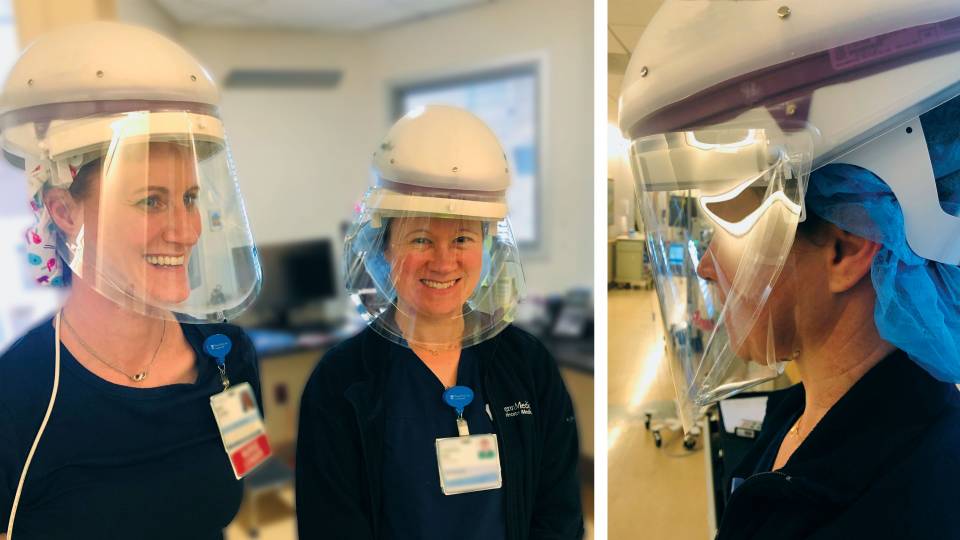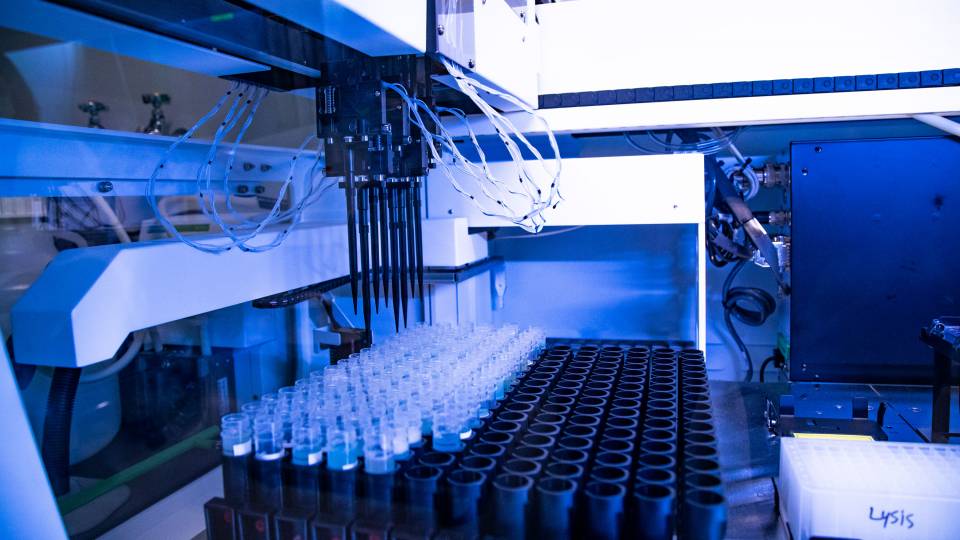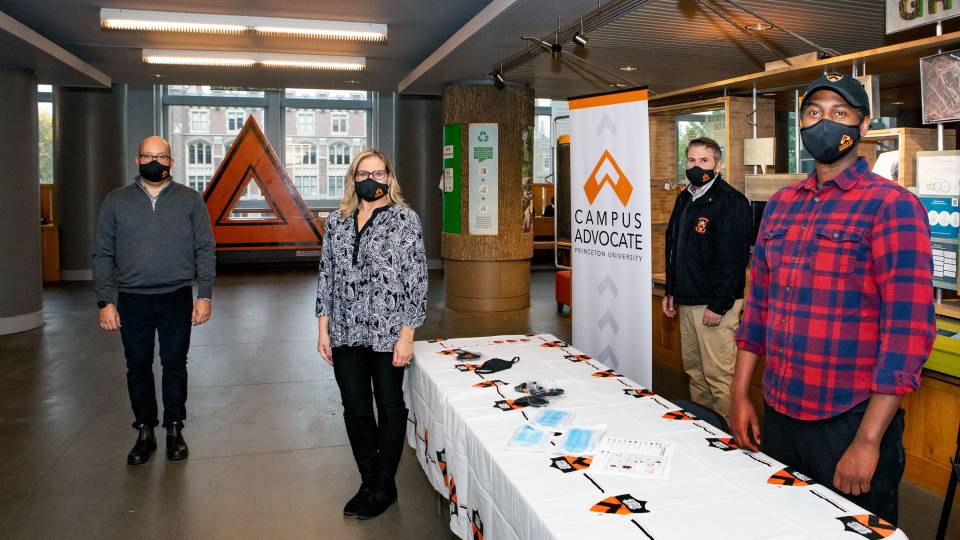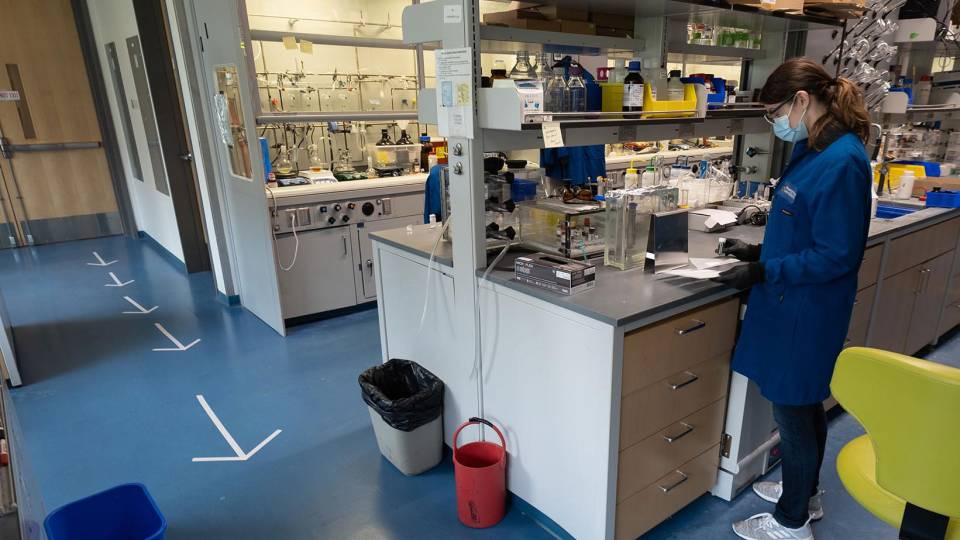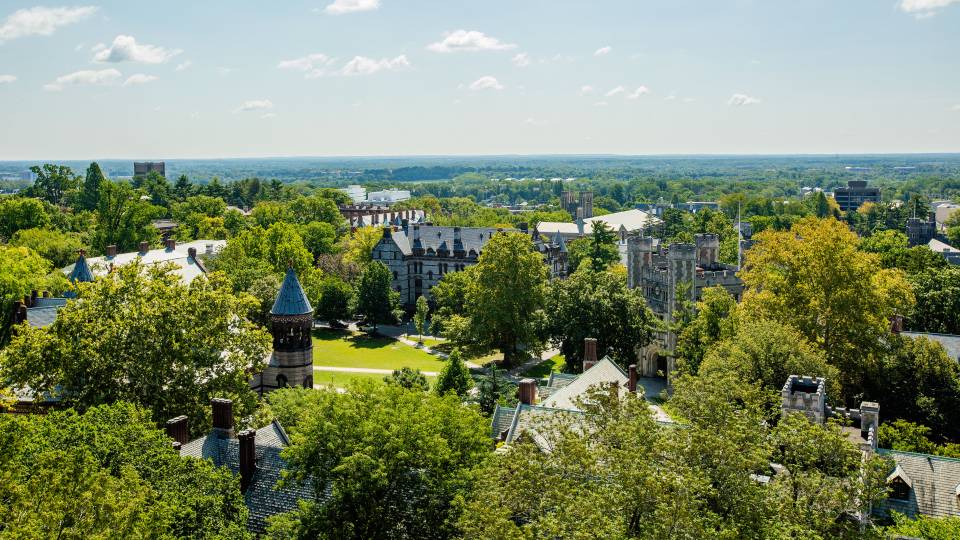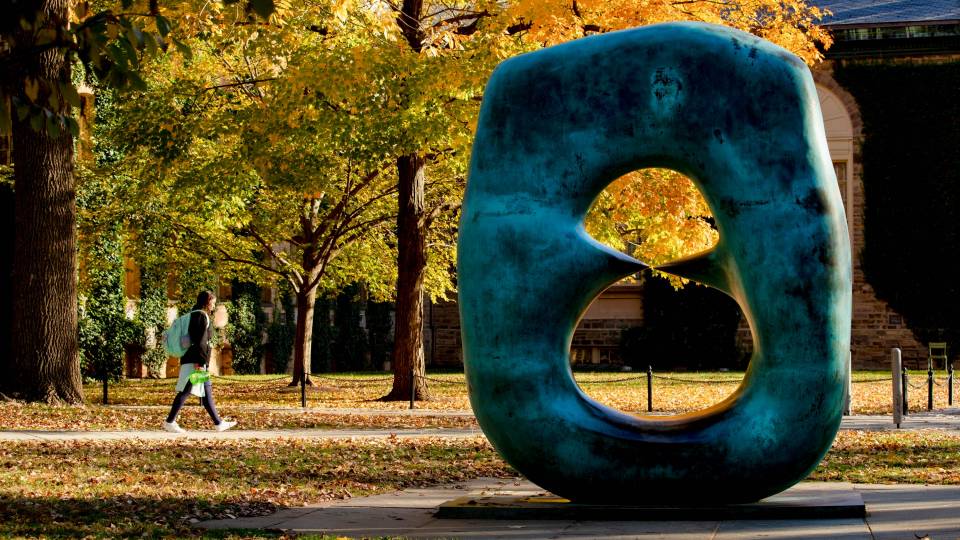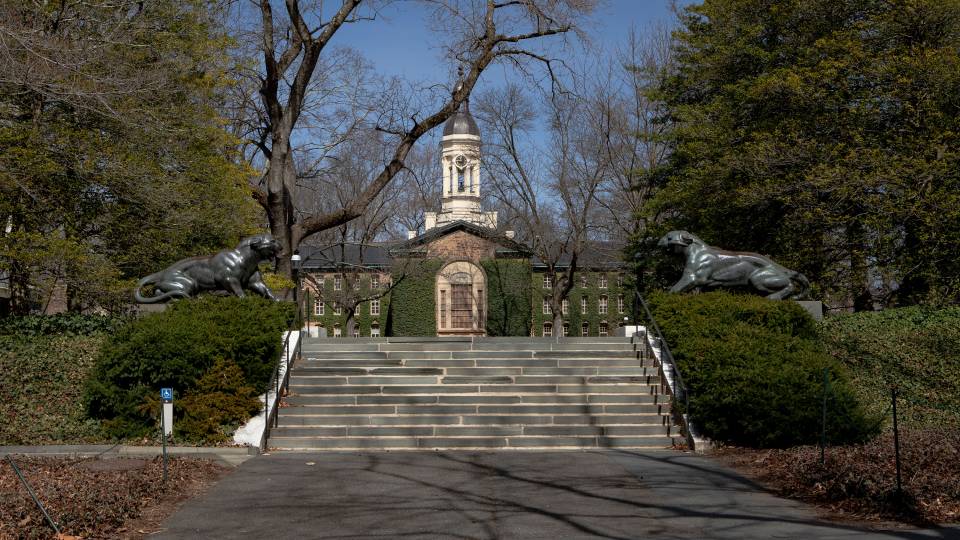On April 1, 2020, as the pandemic threatened to overwhelm area hospitals, Andrew Leifer was looking for a way to help. The Princeton University physicist connected with doctors at the University of Pennsylvania Health System in Philadelphia who were working to prevent a looming shortage in machines used to keep patients breathing.
Penn Medicine, which runs hospitals in Pennsylvania and New Jersey, needed specialized machines to monitor the breathing patterns and flow of oxygen to patients undergoing noninvasive ventilation, a form of respiratory support that is gentler on the lungs and has caught on in popularity during the crisis. The hospitals needed the machines to meet exacting standards, and they needed them fast. Plus, there was a catch: the parts used to build the devices were nearly impossible to find. So Leifer and his colleagues at Princeton would have to improvise.

Assistant Professor Andrew Leifer with an early prototype of the monitor.
They did. In a few weeks, a collection of researchers, professors, technicians, graduate students and staffers designed, prototyped and tested the new machine. The created new supply chains for re-purposed parts, fine-tuned subsystems in the labs of Princeton’s materials institute, and built the new machines in Jadwin Hall. Within a month, the team had produced 50 of them. They soon contracted with an outside vendor to build hundreds more.
“The goal is to help patients with COVID-19, and to be able to work toward that goal was just tremendous,” said Leifer, an assistant professor of physics and neuroscience. “We have had involvement at all levels: faculty, students, postdocs, staff. It’s amazing.”
What was still missing was a way to monitor the airflow and measure the patients’ breathing, so Princeton scientists and engineers came up with a flow meter that would sit by each patient’s bedside, feeding data to a centralized panel where medical staff can monitor the conditions of many patients. The machines monitor the flow of oxygen to the patients and provide a detailed record of each patient’s respiration and other data to help doctors follow the progression of the disease.
“There was a realization in the medical community that ventilators were a method of last resort,” said Daniel Marlow, the Evans Crawford 1911 Professor of Physics. “So Andrew, I, Chris Tully, Daniel Cohen and David Tank got started making flow meters for Penn.”
At its most basic, a flow meter is a pipe with sensors to read pressure differences at each end. The Princeton team, comfortable with building complex instruments for experiments, were able to create a design, but the challenge was using only parts that were both available and affordable. Their final design and related information were made public for use by other researchers and medical workers.
Peter Elmer, a senior research physicist, led the software development team to find the best way to analyze the raw signals from the flow meters and calculate the values needed by medical personnel, such as respiratory rates. Their software also allows alarms to be set and manages the flow of data from each patient to the central monitoring panel.
As the basic assembly moved forward, the researchers tweaked the design as they received feedback from the doctors at Penn Medicine.
“Typically, you don’t come out of R and D until you have a product,” said Bert Harrop, a senior technician at the Princeton Institute for the Science of Materials (PRISM) and the physics department. “But this time, we were doing tests in the lab and making changes as we built the product.”
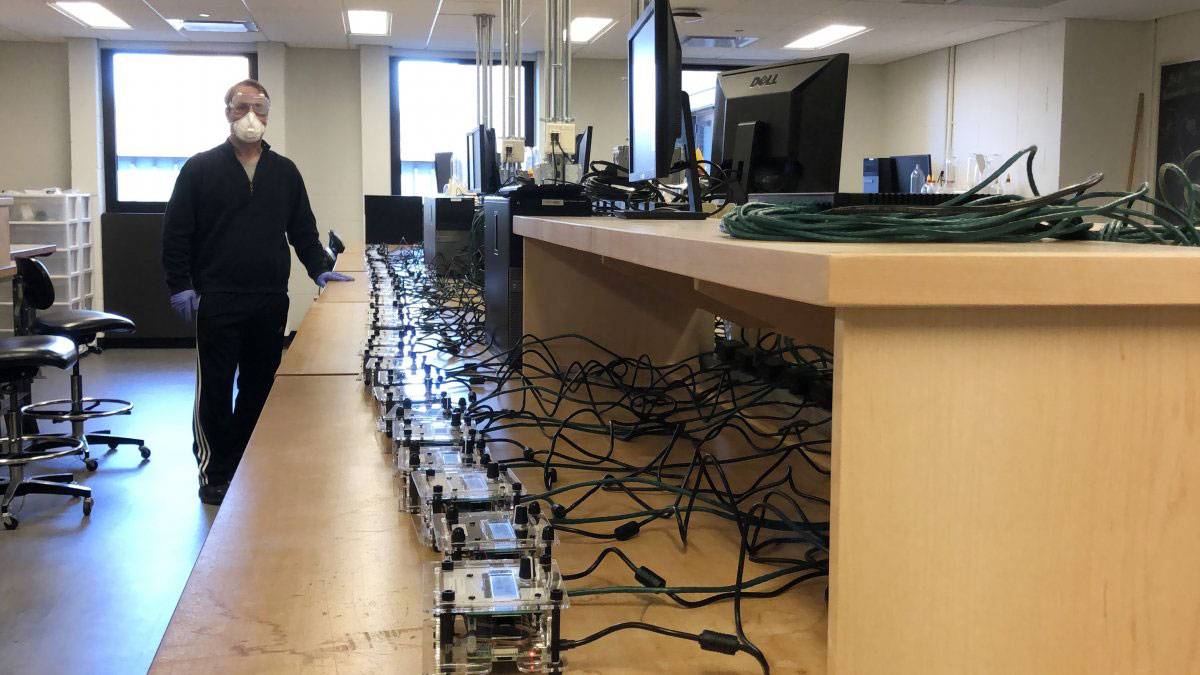
Professor Chris Tully tests a network of the first group of controllers.
Elmer, Marlow and Leifer have been awarded an emergency grant from the National Science Foundation to extend the development of their low-cost and open-source monitors and study how lungs operate when stressed by COVID-19. Their goal is to help medical professionals provide optimum care for patients being treated for COVID-19, to minimize mortality and adverse long-term effects.
Tests have shown that the Princeton flow sensors perform comparably to commercial versions, at a lower cost.
“In my 20 years as a member of the Princeton faculty, this is the first opportunity I have had to engage across so many departments,” Tully said. “To see the group look beyond basic research questions, to do whatever we needed to do to make the system work, has been an extraordinary experience. It reminded me how powerful the intellectual resources of the University can be in times of great need.”
Additional contributors to the project include: Howard Stone, the Donald R. Dixon '69 and Elizabeth W. Dixon Professor of Mechanical and Aerospace Engineering and the chair of the department, plus two postdoctoral researchers in his research group, Philippe Bourrianne and Janine Nunes; Craig Arnold, the Susan Dod Brown Professor of Mechanical and Aerospace Engineering and PRISM director; computational physicists David Lange, Henry Schreiner and Jim Pivarski; teams in University machine shops, including Al Gaillard in mechanical and aerospace engineering and Stanley Chidzik in physics; and a number of external collaborators. A full list of contributors to the project can be found on the project page.
Editor’s note: For the full version of this story, visit the Engineering website.





